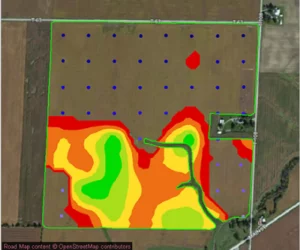Stansbery Seed and Service
Systematic soil testing is the first step toward higher yields and quality.
Whether you prefer grid, or random soil sampling, a systematic soil testing program is the first step in creating higher crop yields and quality. The long-term financial success of a farm requires a sound crop fertility program based on a thorough knowledge of soil resources and crop needs.
Grid Sampling
Our goal is to utilize the new SST Sirrus technology to produce the most accurate nutrient recommendations to balance your fields soil fertility. The sampling procedure consists of hand-probing a set of seven samples, from an area of 2.5 acres, at a depth of 6 inches. This is followed by sending the samples into a lab to be tested, usually a three day turnaround period. When the results are in, we provide a recommendation map for the elements needed in each specific area of the field. We also provide a flash drive of the maps for your application conveniences.

Soil Testing Packages
Soil Package 1
Basic Soil Test Package
Includes: Soil pH, Buffer pH, Organic Matter, Available Phosphorus, Exchangeable Potassium, Calcium, Magnesium, Cation Exchange Capacity, Percent Base Saturation of Cation Elements with recommendations.
Soil Package 2
Basic Plus Soil Test Package
Includes: Basic Soil Test plus choice of any three of the following micro-nutrients: Boron, Copper, Iron, Manganese, Sulfur and Zinc with recommendations.
Soil Package 3
Complete Soil Package
Includes: Basic Soil Test plus Boron, Copper, Iron, Manganese, Sulfur and Zinc with recommendations.

